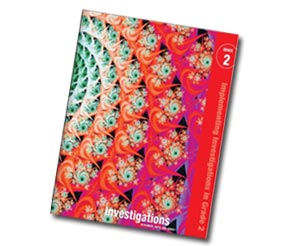First things first:
I was awarded the One Lovely Blog award by Where Seconds Count.
As I said, I was given this award by:

Thank you, thank you, thank you!!! :-)
Once you receive the award, you must follow 3 rules:
1. Follow the person that gave you the award
2. Link back to the person that gave you the award
3.Pass the award on to 15 new bloggers
I have chosen the following blogs to award:
1) What the Teacher Wants
2) Thinking of Teaching
3) The Teacher Wife
4) Teaching in Flip Flops
5) Sweet Seconds
6) Step Into 2nd Grade with Mrs. Lemons
7) Primary Graffiti
8) Pitner's Potpourri
9) One Extra Degree
10) My Second Grade Journal
11) Mrs. Freshwater's Class
12) Lory's Page
13) Hopelessly Devoted to Teaching
14) First Grade Glitter and Giggles
15) Create●Teach●Share
Now on to Guided Math Chapter 4!!!
This chapter was all about whole class implementation of Guided Math. Here are my thougthts:
1) Whole class instruction is certainly appropriate in some situations. Those include: mini-lessons (another link I saw to reading instruction!!!), activating strategies, math read alouds (this is something I'd like to incorporate more), setting the stage for math workshop, Math Huddles, practice and review, and formal testing/assessment. As I implemented the Daily 5 in reading last year, I can certainly attest to the importance of setting up routines, and in this case, setting the stage for math workshop.
2) I think the biggest challenge that Sammons mentions with regard to whole group instruction is the inability to provide timely and appropriate feedback. This is SO, SO important for your struggling learners. The danger here is allowing students to incorrectly learn and reinforce this. Very difficult to undo once it has been cemented.
3) I'm so glad that Sammons provides us with the sample architecture of a mini-lesson. I can't wait to try it out!
4) With regard to activating strategies, I have a confession to make. With KWL charts I have used, of course I had students fill out the "L" column stating what they have learned. HOWEVER, I never had them revise what they thought they knew. BAD TEACHER!!! This was such a "Duh!" moment for me. I'm a bit ashamed.
5) As my district moves from Envision to Investigations, I'm excited to adapt the KWL charts for problem solving as Sammons suggests (p. 119).
6) I'm not sure what I think about Word Splashes yet. I am willing to give it a try, and I think it will really work well with Thinking Maps, which my school has adopted for the coming school year. What do you think about this strategy? Will you try it with your students?
I need to get reading Chapter 5 (remember a few posts ago, when I detailed the saga of my defective book that was missing 30 pages?). Anyway, Laney Sammons came to my rescue and sent me a new book, so I'm good to go. I can't wait to catch up on the book study.
Until next time,




















